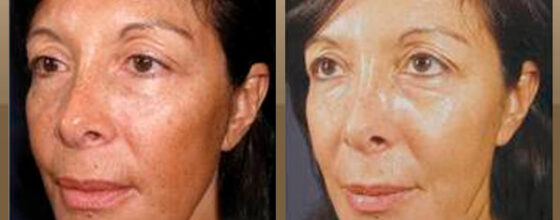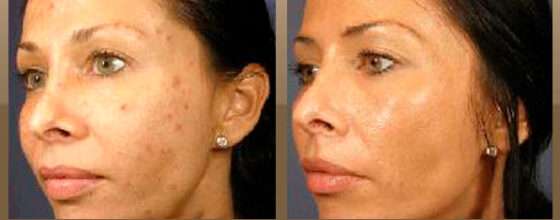Men and women alike share a common desire to have healthy, youthful skin. Exposure to the sun and the elements in combination with adverse living habits contribute to the appearance of our skin. Chemical peels are increasingly popular with those who are unhappy about acne scarring, sun-damaged skin, age spots, freckles, fine lines, rough skin, and uneven pigmentation. A chemical peel is not limited to the face, and can be performed on the neck, chest, hands, arms, shoulders, and legs – just about anywhere!
Chemical Peel
Chemical Peel FAQs
A: Chemical Peels are topically applied acids that aid in the restoration and rejuvenation of the skin's surface. They create a uniform and controlled shedding of several layers of the skin. Depending on the nature and depth of the peel, a significant number of layers can be exfoliated allowing new growth to be exposed, creating a fresh vibrant appearance.
A: Your skin type and the results you are aspiring to achieve will determine if you are a candidate, as well as which class of peel is most appropriate for you.
A: Chemical peels can enhance your appearance by reducing blotchy and uneven pigmentation, fine lines and wrinkles, freckling, age spots, sun-damaged skin, and acne scars in a relatively brief measure of time. Chemical peels accelerate the production of new cells. Enjoy fresh smooth skin-immediately after your first treatment!
A: Chemical peels have become increasingly popular because of the array of advantages and relative lack of complications. Side effects are rare and usually temporary. Some side effects include uneven pigmentation, redness, and very infrequent scarring if the skin is not cared for appropriately. Sun protection is crucial to minimize the risk of side effects. A treatment program of individually suited products and sun protection will benefit your skin's ability to maintain the results of the peel. You can decrease the likelihood of side effects by carefully following the instructions of your treatment provider.
Types of Chemical Peels:
Chemical peels are classified as superficial, medium, and deep peels.
This peel is designed to help smooth coarse, dry skin, improve the texture of sun-damaged skin, and even out skin tone. The recovery is generally rapid and usually involves some minor flaking. A series of treatments is ordinarily recommended to obtain the desired result over a period of time. Typically, there is no down time and with appropriate sun protection, you can resume regular activities immediately.
Medium peels contain a stronger potency of acids. Medium peels target the epidermis and upper dermis and cause the skin to slough within 5 to 7 days. Immediately after treatment the skin has a red appearance and is occasionally accompanied by swelling. Within a day the skin turns brown in color, and after 3 or 4 days the skin initiates the peeling process.
Deep peels produce the most dramatic results. This peel is recommended for treating wrinkles, scars, blemishes and, in some cases, precancerous skin lesions. A deep peel targets the dermis. In some cases, anesthesia is required during the procedure to reduce the warm to hot stinging sensation. After a deep peel, the skin is red and can result in some swelling and blistering. A crust may form and the skin will turn brown just prior to peeling. Many layers of the skin will peel over a period of 1 to 2 weeks. An ointment may be given to keep the area moist. Temporarily, the new skin will have the color and sensation of significant sunburn, which will gradually fade to your normal skin color.



